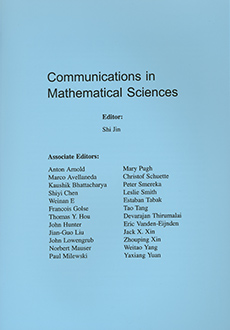Abstract
We examine stochastic coarse-graining strategies for two biomolecular systems. First, we compute the large-scale transport properties of the basic flashing ratchet mathematical model for (Brownian) molecular motors and consider in this light whether the underlying continuous-space, continuous-time Markovian model can be coarse-grained as a discrete-state, continuous-time Markovian random walk model. Through careful computation of associated statistical signatures of Markovianity, we find that such a discrete coarse-graining is an excellent approximation over much but not all of the parameter regime. In particular, for the parameter values associated with the fastest transport by the flashing ratchet, the discretized model displays non-Markovian features such as waiting times between jumps which are not exponentially distributed. We provide a theoretical framework for understanding the conditions under which Markovianity is to be expected in the discretized model and two mechanisms by which the flashing ratchet model coarse-grains to a non-Markovian discretized model. Next we turn to a basic question of how the dynamics of water molecules near the surface of a solute can be represented by a simple drift-diffusion stochastic model. This question is of most interest for the purpose of accelerating molecular dynamics simulations of proteins, but for simplicity, here we examine the simple case where the solute is a C60 buckyball, which has a homogenous, roughly isotropic form. We compare the mathematical drift-diffusion framework with a statistical quantification of water dynamics near a solute discussed in the biophysical literature. A key concern is the choice of time interval on which to sample the molecular dynamics data to generate estimators for the drift and diffusivity. We use a simple mathematical toy model to establish insight and a strategy, but find for the actual molecular dynamics data that the sampling times which produce the most faithful drift coefficient and the sampling times which produce the most faithful diffusion coefficient do not overlap, so that sacrifice of quality in one or the other parameter appears necessary.
Citation
Peter R. Kramer. Juan C. Latorre. Adnan A. Khan. "Two coarse-graining studies of stochastic models in molecular biology." Commun. Math. Sci. 8 (2) 481 - 517, June 2010.
Information





